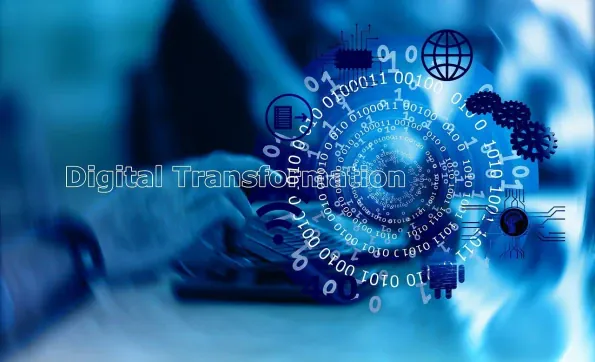Digital transformation is no longer a buzzword but a critical strategy for enterprises aiming to stay competitive in a rapidly evolving market. The GSMA Intelligence report highlights the pivotal role of 5G and AI in driving this transformation, focusing on revenue growth, customer experience, and cybersecurity. This article delves into how these technologies are reshaping enterprise landscapes and the investments and challenges associated with their adoption.
The Role of 5G in Digital Transformation
Enhanced Connectivity and Mobility
5G technology is revolutionizing enterprise connectivity, offering unprecedented speed and reliability. With 85% of enterprises recognizing the importance of 5G, nearly half consider it extremely crucial for their digital strategies. Enhanced connectivity is particularly valued, with 52% of businesses highlighting it as a key feature. This improved connectivity supports high mobility sectors such as automotive, transportation, logistics, and warehousing, where seamless communication and data transfer are essential. For these industries, rapid and reliable data exchange is the backbone of operations, enabling them to optimize processes, enhance service delivery, and maintain real-time monitoring capabilities.
The impact of 5G extends beyond these sectors, influencing various aspects of enterprise operations. For instance, enhanced connectivity allows for the implementation of advanced digital tools and applications, fostering innovation and improving overall efficiency. This transformative potential of 5G underpins its growing importance in enterprise digital strategies and the substantial investments directed toward its adoption. By enabling faster data transmission and reduced latency, 5G networks facilitate real-time analytics and decision-making, which are crucial for maintaining competitive advantage in today’s fast-paced business environment.
Investment Trends in 5G
Enterprises are allocating significant portions of their digital transformation budgets to 5G and associated devices. On average, 21% of these budgets are dedicated to connectivity, with an additional 13% focused on mobile technologies, including 5G. This investment is forecasted to be 2.5 times greater than that for 4G, underscoring the critical role of 5G in future enterprise strategies. The emphasis on 5G is driven by its potential to enhance security and connectivity, which are top priorities for many businesses. Enhanced security features of 5G are particularly crucial in sectors handling sensitive data, such as financial services, healthcare, and government.
Furthermore, the adoption of 5G is expected to spur innovation in emerging technologies like IoT and AI, creating a synergistic effect that propels enterprises toward their digital transformation goals. The massive bandwidth and low latency of 5G networks enable the deployment of a vast number of connected devices, facilitating advanced IoT applications and real-time data processing. These capabilities are invaluable in industries like manufacturing, where IoT sensors can monitor equipment performance and predict maintenance needs, thereby reducing downtime and improving operational efficiency. This strategic investment in 5G not only lays the groundwork for immediate technological advancements but also positions enterprises to leverage future innovations, ensuring sustained competitive edge and operational excellence.
AI’s Impact on Enterprise Operations
Improving Customer Experience and Security
Artificial Intelligence (AI) is another cornerstone of digital transformation, with enterprises dedicating 14% of their technology expenditures to AI. This investment is aimed at improving customer experiences, fortifying security protocols, and boosting employee productivity. Generative AI, in particular, has gained rapid importance, with 90% of companies incorporating it into their digital strategies. However, only 33% are utilizing generative AI in advanced ways, indicating significant room for future development. As AI technologies continue to evolve, the scope of their applications within enterprises is expected to expand, driving further investments and innovation.
In the realm of customer experience, AI-powered chatbots and virtual assistants are revolutionizing how businesses interact with their clients. These tools offer personalized and efficient support, enhancing customer satisfaction and loyalty. Additionally, AI is playing a pivotal role in cybersecurity by identifying and mitigating threats in real time. Advanced AI algorithms can detect unusual patterns and anomalies, providing early warnings and enabling proactive measures to safeguard enterprise systems. This dual impact on customer experience and security highlights the transformative potential of AI, making it an indispensable component of modern digital strategies.
AI Adoption Across Sectors
Different industry sectors are leveraging AI to address specific challenges and opportunities. For instance, the financial services sector leads in generative AI adoption, with 92% of companies using the technology. The media and entertainment industry also shows high adoption rates, with 91% already integrating AI into their operations. These sectors are focusing on revenue growth and customer experience enhancement, demonstrating the versatile applications of AI across various industries. In financial services, AI is used for fraud detection, personalized banking solutions, and risk management, streamlining operations and enhancing service delivery.
Similarly, the healthcare sector is leveraging AI for diagnostics, predictive analytics, and personalized treatment plans, thereby improving patient outcomes and operational efficiency. The transportation and logistics industry utilizes AI for route optimization, demand forecasting, and fleet management, reducing costs and enhancing delivery efficiency. Retail businesses are employing AI for inventory management, customer insights, and personalized marketing, driving sales and customer engagement. This widespread adoption across sectors underscores the critical role of AI in addressing industry-specific challenges while unlocking new growth opportunities and operational efficiencies.
IoT and eSIM: Complementary Technologies
Advancing IoT Deployments
The Internet of Things (IoT) is another critical component of digital transformation, with businesses increasingly adopting advanced IoT technologies. The transition to 5G is enhancing IoT capabilities, enabling more sophisticated applications and improved scalability. Enterprises are particularly interested in using eSIM for their IoT deployments due to its scalability and enhanced security features. The report projects that eSIM will account for 42% of the total IoT cellular market by 2030, highlighting its growing importance. The combination of 5G and eSIM technology facilitates seamless connectivity and management of a vast array of IoT devices, driving efficiency and innovation across industries.
For example, in the manufacturing sector, IoT sensors and devices are used to monitor production processes, ensuring optimal performance and reducing downtime through predictive maintenance. In the energy sector, IoT-enabled smart grids and meters allow for more efficient energy management and distribution, enhancing sustainability efforts. The healthcare industry is leveraging IoT for remote patient monitoring, improving patient care and reducing healthcare costs. These diverse applications demonstrate the transformative potential of IoT technologies, which, when coupled with 5G and eSIM, pave the way for truly connected and intelligent enterprise ecosystems.
Sector-Specific IoT Applications
Different sectors are leveraging IoT in unique ways to drive efficiency and innovation. For example, the transportation, logistics, and warehousing sector is making significant strides in IoT adoption, with 36% of businesses using advanced IoT technologies. IoT solutions in this sector enable real-time tracking and management of assets, optimizing supply chain operations and reducing delivery times. Similarly, the healthcare sector is allocating 14% of its digital transformation budgets to AI, with a strong focus on IoT applications to improve patient care and operational efficiency. In healthcare, IoT devices can monitor vital signs, track medication adherence, and enable remote consultations, ensuring timely and effective patient care.
The agriculture sector is also seeing a growing adoption of IoT technologies, with smart farming solutions that monitor soil conditions, weather patterns, and crop health, enhancing productivity and sustainability. In retail, IoT is used for inventory management, optimizing stock levels, and providing real-time insights into consumer behavior. These sector-specific applications underscore the versatile impact of IoT, which, when integrated with AI and 5G, can drive significant improvements in operational efficiency, cost savings, and customer satisfaction across various industries. As enterprises continue to explore and invest in IoT technologies, the scope for innovation and enhanced performance is immense.
The Demand for Full-Stack Suppliers
Collaborating with Diverse Suppliers
As enterprises accelerate their digital transformation efforts, there is a growing demand for full-stack suppliers capable of offering comprehensive technology solutions. Generalist suppliers, such as hyperscalers and telecom network/equipment vendors, are preferred for their ability to support the entire digital transformation journey. These suppliers are essential for integrating complex technologies like 5G, AI, IoT, and cloud systems, which are critical for improving efficiency, security, and revenue growth. Partnering with full-stack suppliers allows enterprises to streamline their technology investments and focus on strategic objectives rather than managing disparate systems and vendors.
Moreover, full-stack suppliers bring deep expertise and a holistic approach to digital transformation, assisting enterprises in navigating the complexities of technology integration and implementation. By providing end-to-end solutions, these suppliers enable a seamless and cohesive digital transformation process, ensuring that all technological components work together harmoniously to drive business success. This comprehensive support is particularly valuable as enterprises increasingly adopt advanced and interconnected technologies, requiring a coordinated approach to achieve optimal results.
Supplier Competition and Collaboration
The increasing demand for full-stack solutions is intensifying supplier competition, with enterprises seeking partnerships that go beyond basic network services. The role of tech orchestrators is expected to grow in importance, presenting new opportunities for multi-service suppliers capable of integrating and managing diverse technological components. This trend is fostering competitive dynamics and collaborative innovation, as suppliers strive to meet the burgeoning needs of enterprises. As a result, suppliers are investing in expanding their service portfolios and enhancing capabilities to deliver more integrated and value-added solutions.
Collaboration among different suppliers is also becoming more prevalent, as enterprises require a combination of specialized expertise to achieve their digital transformation goals. For example, telecom providers might partner with AI startups and IoT solution firms to offer comprehensive packages that address specific industry needs. This collaborative approach not only delivers more robust and tailored solutions but also drives innovation through the convergence of diverse technologies and expertise. As the landscape evolves, the ability to orchestrate and manage these collaborations will be a key differentiator for suppliers, enabling them to secure long-term partnerships and drive mutual growth.
Sector-Specific Insights
Financial Services
The financial services sector is at the forefront of digital transformation, leading in the adoption of generative AI technology. With 92% of companies using AI, this sector is also the highest spender on digital transformation, allocating 10.4% of revenue to these initiatives. The strong focus on AI is driving significant advancements in customer experience and security. For instance, AI-powered solutions in fraud detection, automated customer service, and personalized financial advice are enhancing service delivery and operational efficiency. The sector’s commitment to digital innovation is reshaping traditional financial services, paving the way for more agile, customer-centric, and secure financial operations.
In addition to AI, the financial services industry is also heavily investing in cybersecurity measures to protect sensitive data and ensure regulatory compliance. Advanced security protocols, coupled with real-time threat detection and prevention systems, are vital for maintaining trust and safeguarding digital transactions. The integration of AI with these security measures enables more sophisticated and proactive defense mechanisms, ensuring robust protection against evolving cyber threats. This comprehensive approach to digital transformation underscores the sector’s focus on maintaining competitive advantage, driving growth, and delivering superior customer experiences.
Media and Entertainment
Revenue growth is a top objective for the media and entertainment industry, with 65% of businesses citing it as extremely important. High generative AI adoption, with 91% already using the technology, is driving innovation in content creation, audience engagement, and personalized experiences. AI is revolutionizing how content is produced, distributed, and consumed, enabling media companies to deliver highly targeted and relevant content to their audiences. This personalization not only enhances viewer satisfaction but also drives higher engagement and monetization opportunities through targeted advertising and subscription models.
Additionally, AI is being used to analyze vast amounts of data generated by user interactions, helping media companies better understand audience preferences and behavior. This data-driven approach enables more informed decision-making, optimizing content strategies and marketing efforts to maximize reach and impact. The emphasis on revenue growth and AI-driven innovation highlights the media and entertainment industry’s commitment to staying ahead in a highly competitive and dynamic market. By leveraging cutting-edge technologies, media companies are transforming how they operate, engage with audiences, and generate value.
Conclusion
Digital transformation has moved beyond being just a trendy term; it is now an essential strategy for businesses striving to remain competitive in a swiftly changing market. The GSMA Intelligence report underscores the significant role that 5G and artificial intelligence (AI) play in propelling this transformation. It emphasizes key areas such as revenue growth, enhancing customer experience, and bolstering cybersecurity. This article explores the ways these technologies are revolutionizing enterprise landscapes. Additionally, it addresses the financial investments and challenges that come with adopting these advanced technologies. Adopting 5G and AI is crucial for businesses looking to innovate and enhance their operations. These technologies offer improved connectivity, predictive analytics, and automated processes, which can lead to increased efficiency and customer satisfaction. However, enterprises must also navigate the complexities and expenses associated with implementing these cutting-edge solutions. The evolution driven by 5G and AI is reshaping the competitive landscape and compelling companies to adapt or risk falling behind.













